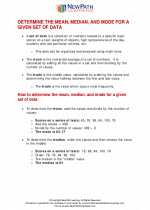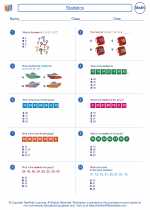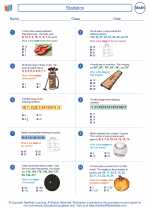Solving Problems
What is Problem Solving?
Problem solving is a critical skill in mathematics and in everyday life. It involves the ability to analyze a situation, identify the problem, develop a plan or strategy to solve it, and then apply the appropriate techniques to arrive at a solution.Steps for Problem Solving:
- Understand the Problem: Read the problem carefully and make sure you understand what is being asked.
- Devise a Plan: Think about the different strategies or methods you could use to solve the problem. This might involve drawing a diagram, making a table, or using algebraic equations.
- Carry Out the Plan: Implement the plan you devised in step 2. Use the appropriate mathematical operations or techniques to work through the problem.
- Check Your Answer: Once you have a solution, go back and check your work to ensure that it is accurate and makes sense in the context of the problem.
Types of Problems:
- Word Problems: These problems require translating a real-world situation into mathematical expressions and equations.
- Number Problems: These problems involve working with numerical quantities and operations.
- Geometry Problems: These problems relate to the properties and measurements of shapes and figures.
- Algebraic Problems: These problems involve using variables and algebraic expressions to solve equations and inequalities.
Study Guide for Solving Problems:
- Practice identifying key information in word problems and translating it into mathematical expressions.
- Review different problem-solving strategies such as drawing diagrams, making tables, using algebraic formulas, and working through step-by-step solutions.
- Work on developing your critical thinking and logical reasoning skills, as these are essential for problem solving.
- Seek out challenging problems and practice solving them to enhance your problem-solving abilities.
- Collaborate with peers and discuss problem-solving approaches to gain different perspectives and insights.
◂Math Worksheets and Study Guides Sixth Grade. Statistics
Study Guide Statistics
Statistics  Worksheet/Answer key
Worksheet/Answer key Statistics
Statistics  Worksheet/Answer key
Worksheet/Answer key Statistics
Statistics  Worksheet/Answer key
Worksheet/Answer key Statistics
Statistics  Worksheet/Answer key
Worksheet/Answer key Statistics
Statistics  Worksheet/Answer key
Worksheet/Answer key Statistics
Statistics  Worksheet/Answer key
Worksheet/Answer key Statistics
Statistics 

 Worksheet/Answer key
Worksheet/Answer key
 Worksheet/Answer key
Worksheet/Answer key
 Worksheet/Answer key
Worksheet/Answer key
 Worksheet/Answer key
Worksheet/Answer key
 Worksheet/Answer key
Worksheet/Answer key
 Worksheet/Answer key
Worksheet/Answer key

The resources above cover the following skills:
Data Analysis and Probability (NCTM)
Select and use appropriate statistical methods to analyze data.
Find, use, and interpret measures of center and spread, including mean and interquartile range.